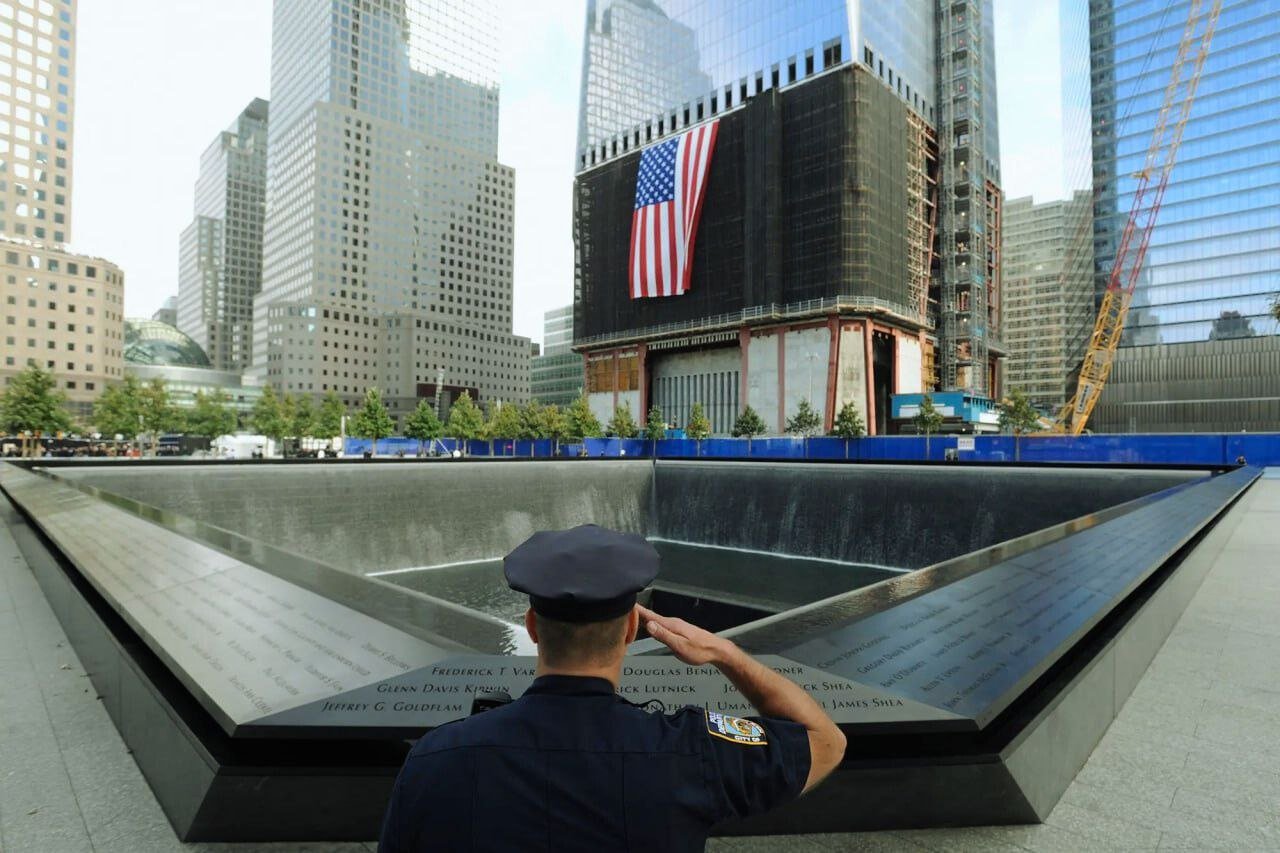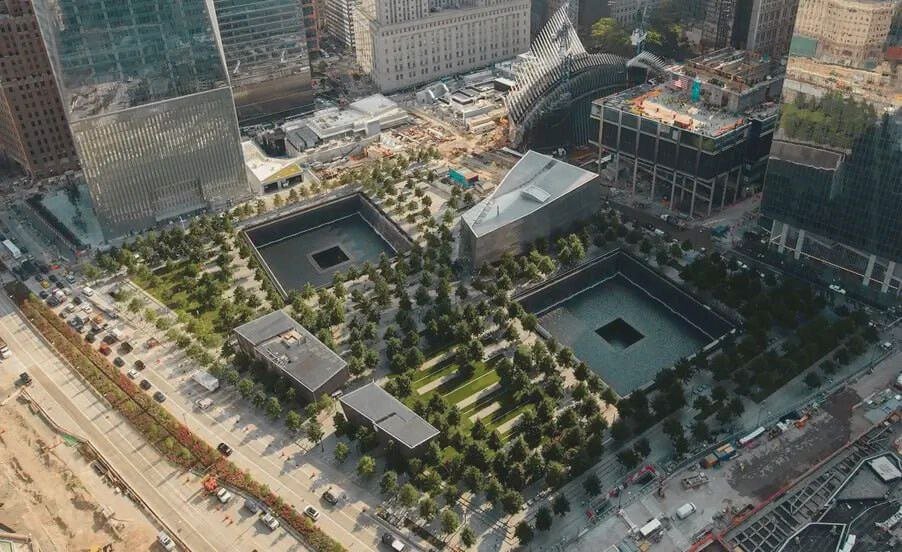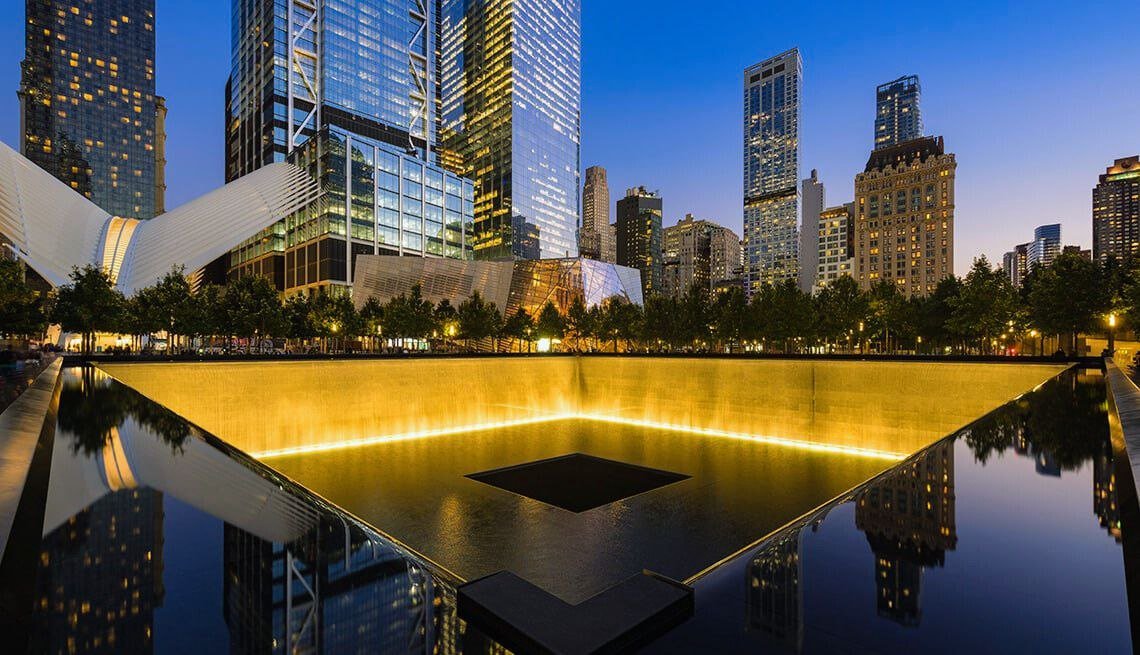Contents

Located in the heart of Lower Manhattan, the 9/11 Memorial & Museum stands as a poignant tribute to the nearly 3,000 lives lost on September 11, 2001, and the six lives lost during the World Trade Center bombing in 1993. This site is not just a place of remembrance, but also a symbol of resilience, unity, and the enduring human spirit.
The 9/11 Memorial
The 9/11 Memorial, officially named the National September 11 Memorial, occupies the footprint of the former Twin Towers. It features two enormous reflecting pools, each nearly an acre in size, with cascading waterfalls—the largest man-made waterfalls in North America. The names of every person who died in the 2001 and 1993 attacks are inscribed into bronze panels surrounding the pools, allowing visitors to pay their respects in a deeply personal way.
The Memorial Plaza, a peaceful 8-acre green space, is home to over 400 white oak trees. At its center stands the Survivor Tree, a Callery pear tree that was found in the rubble of the World Trade Center, badly damaged but still alive. After being rehabilitated and nurtured, it was replanted at the Memorial and now stands as a living symbol of hope and resilience.
The 9/11 Museum
Beneath the Memorial, the 9/11 Museum offers a powerful and immersive experience, documenting the events of September 11, 2001, the aftermath, and the ongoing impact of the attacks. The museum’s exhibitions are thoughtfully curated to honor the victims, educate the public, and ensure that the world never forgets.

Key Exhibits
Historical Exhibition: This section provides a detailed chronology of the events of 9/11, including the terrorist attacks, the immediate response, and the recovery efforts. Artifacts such as a portion of the antenna from the North Tower and a damaged fire truck offer tangible connections to the day’s events.
Memorial Exhibition: Named “In Memoriam,” this exhibition honors the lives of those who perished. Personal stories, photographs, and mementos create a deeply emotional and personal tribute to each victim.
Foundation Hall: Here, visitors can see the “Last Column,” a 36-foot steel column that was the final piece of the World Trade Center removed from Ground Zero. Covered in mementos, inscriptions, and missing persons posters, it serves as a powerful symbol of loss and remembrance.
Survivor Stairs: These stairs, which provided an escape route for hundreds of people on 9/11, are preserved within the museum, offering a direct link to the experiences of those who fled the collapsing towers.
Visiting the Memorial & Museum
The 9/11 Memorial is free and open to the public daily from 10 am to 5 pm. The museum operates with an admission fee, and advance ticket purchases are recommended to ensure entry at your preferred time.
Thursday through Monday, 10 a.m. to 5 p.m., is when the museum is operating.
The site also offers guided tours, providing in-depth insights into the events of 9/11, the design of the Memorial, and the artifacts housed within the Museum. These tours are led by knowledgeable guides, many of whom have personal connections to the events of that day.
Conclusion
A visit to the 9/11 Memorial & Museum is a profoundly moving experience that combines sorrow, reflection, and a deep appreciation for the resilience of the human spirit. As a site of historical significance and personal tribute, it stands as a testament to the lives lost and the enduring strength of those who survived. Whether you are a resident of New York or a visitor from afar, the 9/11 Memorial & Museum offers an essential opportunity to reflect, remember, and honor the legacy of September 11, 2001.

OUR SITE: toinewsalert.com
